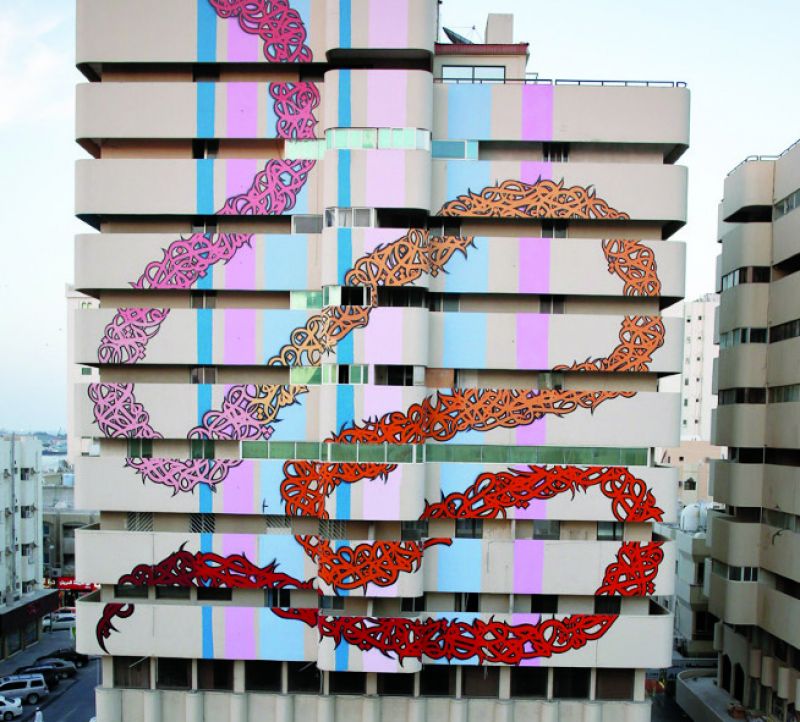All the world’s a canvas
Renowned wall artist El Seed talks about his works that transcend political, linguistic and geographical boundaries across the globe.
New York, Paris, Cairo, Jeddah and Melbourne may have distinct landscapes, but they all share one common physical trait — a massive wall that acts as a backdrop for the works of El Seed. Born in Paris to Tunisian parents, the artist has made facades across the globe his canvas. His goal? To create a dialogue and promote tolerance as well as change global perceptions of what Arabic means.
Says the 35-year-old artiste in an email interview, “When I was 16, I started painting on the streets. Since I was born and raised in France by Tunisian parents, I had a kind of identity crisis when I was a teenager. Around 18, I decided to go back to my roots and start learning Arabic. A few years later, I discovered Arabic calligraphy and merged it with graffiti.”
Having said that, he doesn’t want to call himself either a calligraphy artist or a graffiti artist.
“I don’t want to use all those words. I just define myself as an artist. I try to use Arabic script as my main medium without putting myself in a box or shrinking the beauty of it and actually, using it to raise some universal subject,” he explains.
In 2012, for instance, he painted a message of unity on a 47-meter- high minaret on the Jara mosque in Gabes, Tunisia. Most recently he created a sprawling mural in the Manshiyat Naser neighborhood of Cairo that spans 50 buildings and can only be viewed from a local mountaintop. The latter, called Perception is the closest to his heart. “It was an anamorphic art piece in the neighbourhood called Manshiyet Naser, which is the garbage collectors’ neighbourhood. The idea was to highlight this community and to question our level of misconception and judgement towards communities we don’t know.”
Seed’s works often borrow from local stories. Perception for instance, used a quote from a third century Bishop who was originally from Egypt. He said ‘anyone who wants to see the sunlight clearly needs to wipe his eyes first.’
One of his other popular works stands tall and proud in Cape Town, South Africa, where he painted the only concrete wall of a slum, which was actually a school. “So, I used this quote ‘it is impossible until it’s done’. I think anyone around the world can relate to this quote and this is what I mean when I say it’s relevant to the place I’m painting,” he says.
Even though his works are deeply embedded in Arabic sensibilities, propagating the language or Islam, was never on his mind, he assures.
 Street Bank, Sharjah — John Falchetto.
Street Bank, Sharjah — John Falchetto.
After making his mark in Europe and Africa, El Seed’s new playing ground is Asia. “I’m really interested in Asia and India. I don’t know of it’s destiny, but I feel like there’s something I need to discover in this part of the world. From all the people I meet and all the people I know, they tell me, that (India) from North to South, has so many different languages, people, food and traditions. I’m really interested to discover,” he gushes. Any specific city he’s looking out for? “It’s a surprise,”he signs off.
El Seed will speak at TEDx Gateway, on December 4, at Jamshed Bhabha theatre, NCPA, Nariman Point.





















